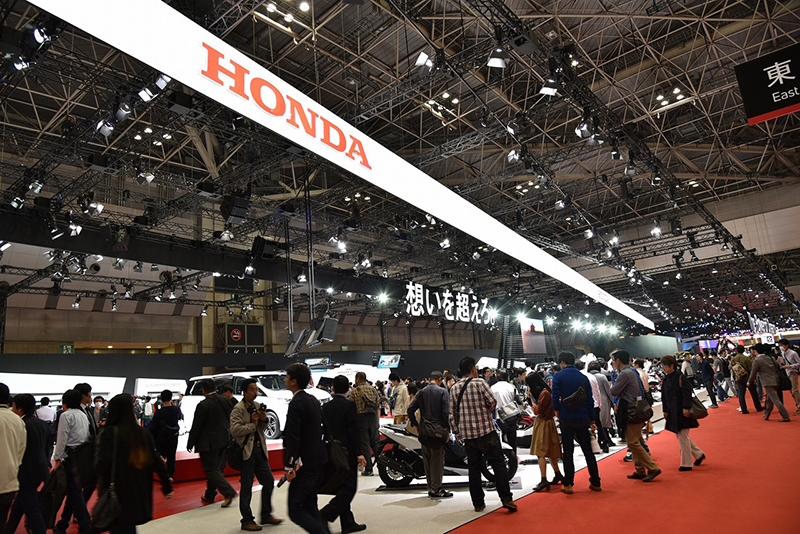
The 44th Tokyo Motor Show was held from October 29th to November 8th at Tokyo Big Sight. The Tokyo Motor Show, first held in 1954, has a history of more than 60 years. It was held every year until 1973, but was cancelled in 1974 because of the oil shock. Since 1975, the motor show has been held every other year. P-Mates reports on the newest cars and technologies introduced to the world at Tokyo Motor Show 2015.
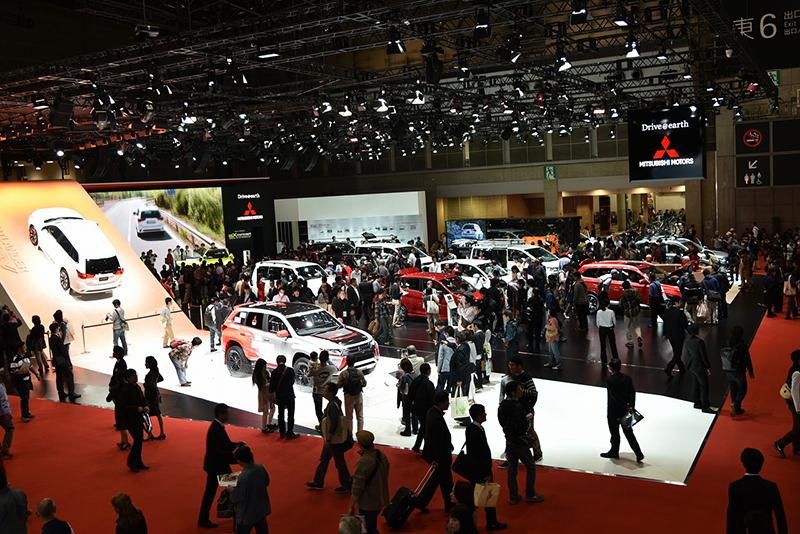
A surprising number of young people were seen there:
For some time it has been pointed out that Japanese youth have lost interest in cars as a result of diversifying values. However, a surprising number of young people were seen among the visitors to the motor show this year. And there were also elderly couples whose love of cars was evident. Also deserving of mention were the many visitors from overseas, particularly from Asian countries. It's uncertain whether they came primarily to see the motor show or took advantage of free time during a sightseeing tour, but the great interest they showed in the cars on exhibit--especially the concept cars--was readily apparent.
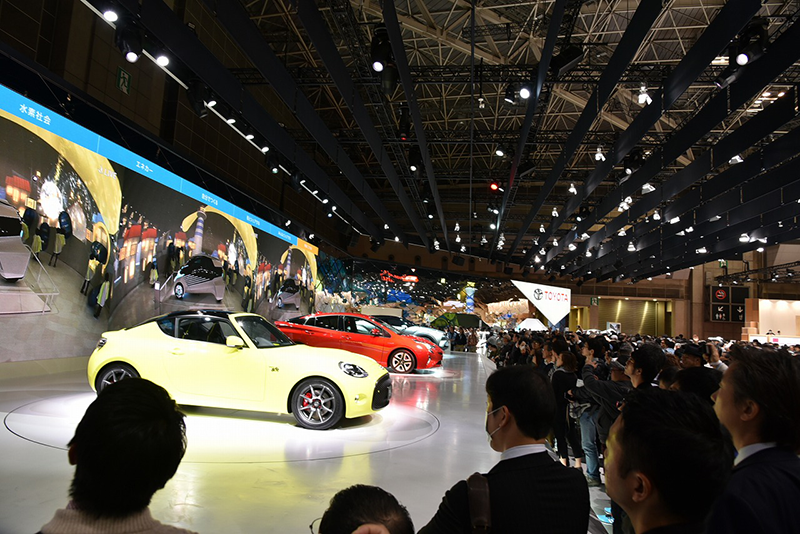
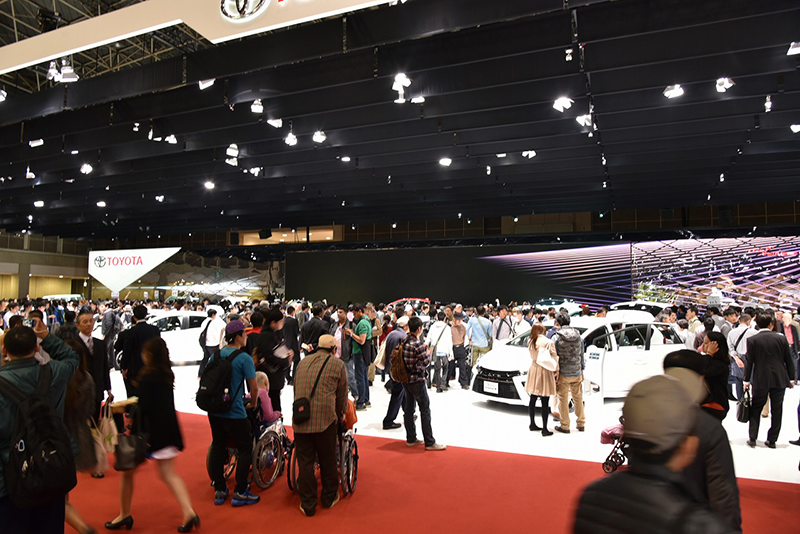
Aiming toward coexistence of cars and the environment:
In recent years, global warming due to carbon dioxide emissions and massive consumption of fossil fuels pose increasingly serious issues in regard to the global environment and energy in the 21st century. One effort well underway to address such issues is development of environment-responsive technologies for automobiles. This is a priority task for the car makers and car component makers who are our customers. The desirable shape of cars for the future has little by little begun to come into focus. We see this evolution in the changes from gasoline and diesel engines to the hybrid car (HEV) to the plug-in hybrid car (PHEV) to the electric vehicle (EV) to the fuel cell vehicle (FCV). The fuel cell vehicle is the ultimate eco car because it runs on electric energy generated by oxygen from the air and compressed hydrogen and only emits water. The realization of such a vehicle would seem to be far in the future; as a matter of fact, a state-of-the-art FCV car on exhibit at the motor show is already on the market. Other exhibits included an experimental car planned for sale in the near future and a hydrogen gas supply station.
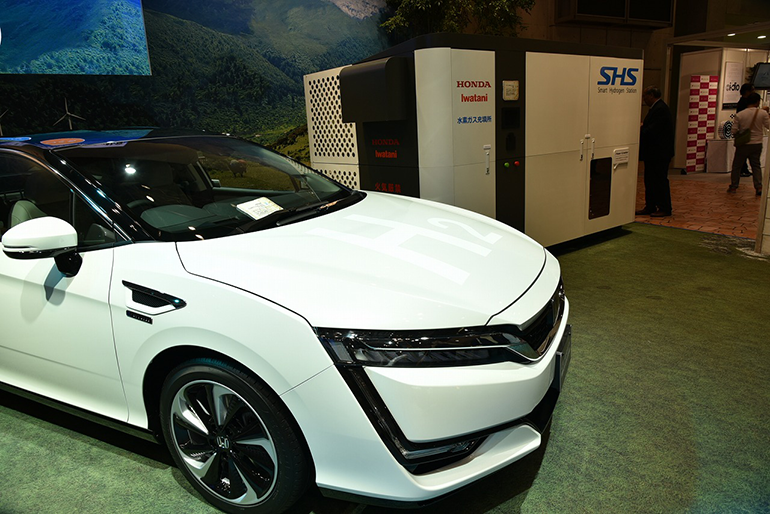
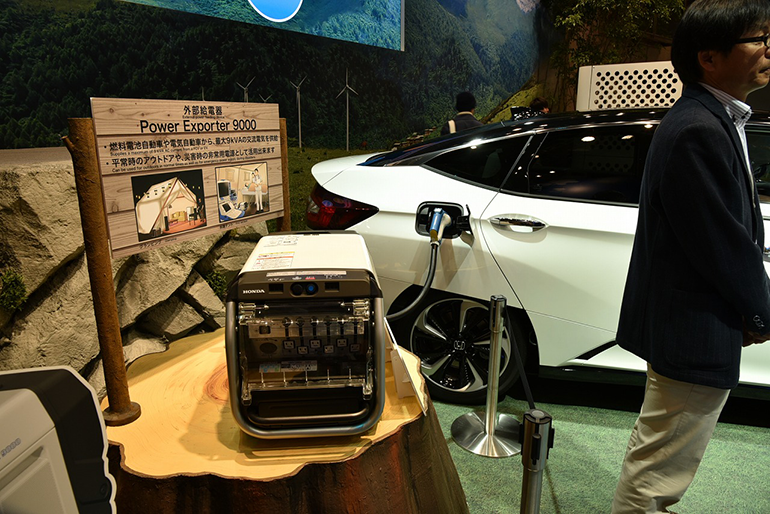
In search of the shape of cars for the near future:
The film Back to the Future portrayed the world in the year 2015. Now we're here! The majority of the visitors to the Tokyo Motor Show were certainly as excited about the cars of the future as the characters in the movie were about the world in 2015. The futuristic car in the photo below exhibited at the Nissan booth was developed by Nissan for a video game character.
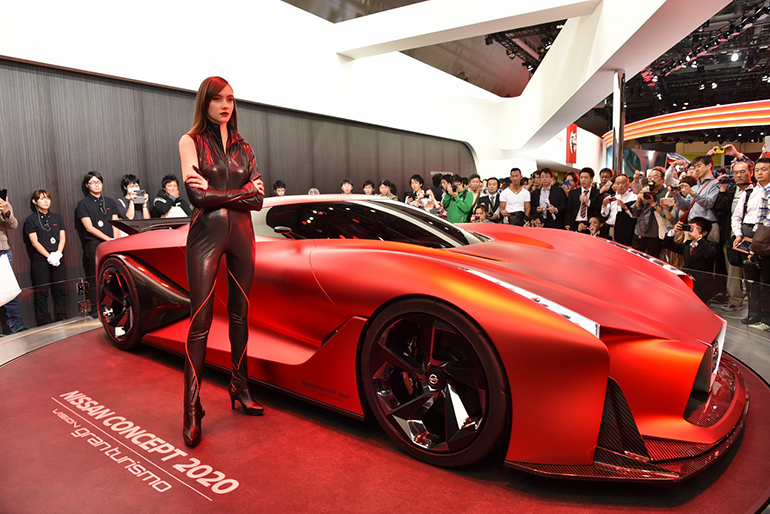
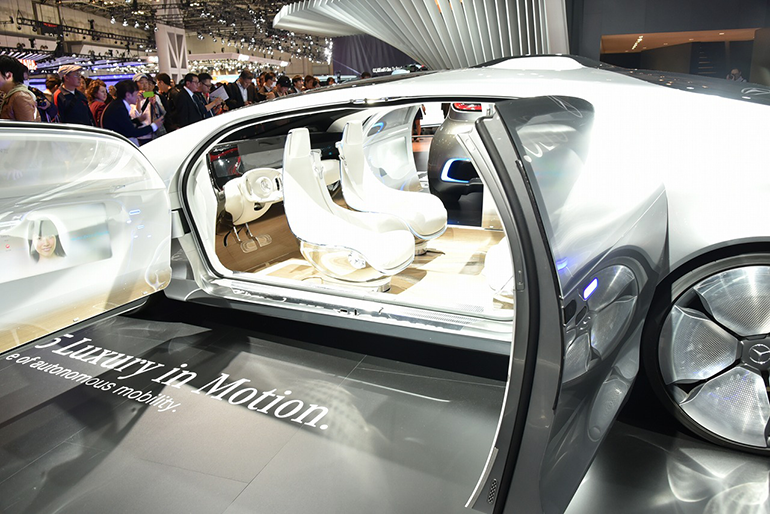
Pursuit of information control technology and safer traffic infrastructure systems:
Recently, accidents caused by elderly drivers are occurring more frequently in Japan and have become an issue for public concern. Causes include mistaking the accelerator pedal for the brake pedal and driving on the wrong side of the expressway. But cars are an essential means of transportation for the elderly and it's not unusual for such persons who don't drive to find themselves isolated from society. Advanced information control technology, epitomized by automatic drive, and traffic infrastructure systems that promote increased traffic safety are in demand. It is told that Auto makers, component makers, and other companies at work on electrical, information transmission, and information control technologies are seeking comprehensive solutions to this issue by approaching it from two directions--development of automatic vehicle control and construction and improvement of traffic infrastructures that enable greater traffic safety. Closed test courses and stretches of expressways are used to conduct demonstration tests in the aim to develop automatic drive vehicles and put them into practical use. Many of you have probably seen TV commercials that make an appeal for the advantages of automatic drive technology.
Polyplastics' contribution to realization of a bright future:
Everyone everywhere always hopes for a future society in which it is possible to safely move anywhere we wish. At Polyplastics we will continue working to produce resin products and technologies that can contribute to making such a bright future society a reality.
Mr. Naoki Chiba